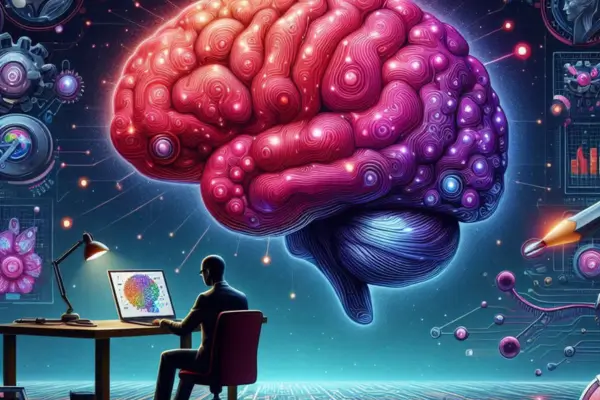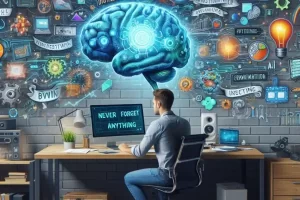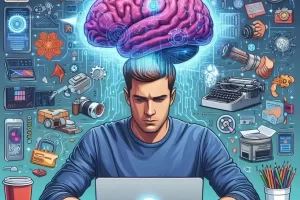Building a second brain with AI is one of the smartest moves you can make in the digital age. But just like any system, it can go wrong if you’re not careful. Many people get excited about the concept, dive in headfirst, and quickly find themselves overwhelmed, disorganized, or abandoning the system altogether.
In this article, we’ll cover the 10 most common mistakes people make when setting up their second brain with AI — and how to avoid them. Learn from these pitfalls so you can build a system that’s sustainable, helpful, and truly transformative.
Mistake #1: Trying to Organize Everything Perfectly from the Start
One of the biggest traps is trying to build the “perfect system” before you even start using it. You spend days creating folders, databases, and templates… but never actually capture or review anything.
Why it’s a problem:
Perfectionism leads to inaction. And your second brain only works if you use it consistently.
What to do instead:
Start messy. Capture first, organize later. Use AI to help categorize and structure things as you go. Ask ChatGPT, “What are the main themes in my last five notes?” or “How would you group these?”
Mistake #2: Using Too Many Tools at Once
It’s tempting to try every shiny new app: Notion, Obsidian, Tana, Mem, Roam, Evernote, and more. But jumping between tools creates fragmentation and confusion.
Why it’s a problem:
You end up duplicating notes, losing information, and wasting time deciding where to save things.
What to do instead:
Choose one main platform and two or three complementary tools. For example:
- Main: Notion
- AI: ChatGPT
- Input: Readwise and Otter.ai
Let AI help integrate and summarize across sources — not create more silos.
Mistake #3: Saving Everything Without Reviewing It
Capturing is only the first step. If you never revisit your notes, you’re not learning — you’re hoarding.
Why it’s a problem:
You forget what you saved, and your second brain becomes a junk drawer.
What to do instead:
Set up a weekly review ritual. Ask AI:
- “Summarize my top insights from this week.”
- “Which notes have I not reviewed in the last 30 days?”
Use tools like Readwise or Notion AI to resurface important content regularly.
Mistake #4: Not Using AI to Its Full Potential
Some people build a second brain and barely use the AI. They manually tag, write summaries, and search using outdated methods.
Why it’s a problem:
You’re missing out on the biggest productivity advantage.
What to do instead:
Let AI:
- Summarize long content
- Generate tasks from journal entries
- Create smart links between ideas
- Help plan your week
Start prompts like:
“Based on this note, what are the next steps?”
“What’s the most important idea in this research article?”
Mistake #5: Overcomplicating the System
Nested databases, color-coded dashboards, and too many tags may look impressive — but they can become a burden.
Why it’s a problem:
If it’s too complex, you’ll stop using it.
What to do instead:
Focus on clarity, not complexity. Build around three to five main categories:
- Projects
- Areas of responsibility
- Notes
- Ideas
- Resources
Ask AI to help simplify: “What’s the simplest way to organize these 30 notes?”
Mistake #6: Ignoring the Importance of Retrieval
A second brain is only useful if you can find what you need, when you need it.
Why it’s a problem:
If you don’t build for retrieval, you’re just piling up content.
What to do instead:
Use AI for natural language search. Instead of remembering exact titles, ask:
- “What were my goals from last quarter?”
- “Remind me of all ideas related to productivity.”
Use tags and backlinks to connect related topics, and use AI to navigate them.
Mistake #7: Failing to Link Ideas Together
One of the superpowers of a second brain is interconnected thinking — but many users leave their notes isolated.
Why it’s a problem:
You miss out on deep insights and connections.
What to do instead:
Use tools like Obsidian or Notion to link related notes. Ask ChatGPT:
- “Which other ideas in my second brain relate to this one?”
- “Create a summary connecting my notes on creativity, writing, and focus.”
This makes your knowledge more valuable over time.
Mistake #8: Not Integrating Tasks and Projects
A second brain isn’t just for storing notes — it should help you take action.
Why it’s a problem:
If your tasks are in one app and your ideas in another, nothing gets done.
What to do instead:
Connect notes and tasks. For example:
- Link meeting notes to action items
- Turn reflections into goals
- Use AI to generate task lists from long-form writing
Let your second brain support your workflow, not just your memory.
Mistake #9: Skipping Regular Maintenance
Even with AI, your system still needs occasional care — archiving old stuff, updating links, reviewing goals.
Why it’s a problem:
Over time, clutter builds up and the system becomes harder to use.
What to do instead:
Do a 30-minute maintenance session every month. Ask:
- “Which notes haven’t been touched in 3+ months?”
- “Which projects are overdue or no longer relevant?”
Use this to refocus and refresh your second brain.
Mistake #10: Thinking the System Will Run Itself
AI is powerful, but your second brain is still your brain. It needs your intention, direction, and curiosity.
Why it’s a problem:
Some people expect magic. Without consistent use, even the best system will fail.
What to do instead:
Use your second brain daily, even in small ways:
- Capture an idea
- Reflect on a goal
- Ask ChatGPT a question about your notes
- Review one old entry
Think of it like going to the gym — consistency is key.
Final Thoughts: Build Smart, Stay Consistent
Avoiding these mistakes doesn’t require perfection — it just requires awareness and adaptability. Your AI-powered second brain will evolve with you, as long as you keep showing up and making small improvements.
Use the tools to help you think, not just store. Let AI guide you, but stay in control. Build slowly, use daily, and your second brain will become one of the most valuable systems in your life.




